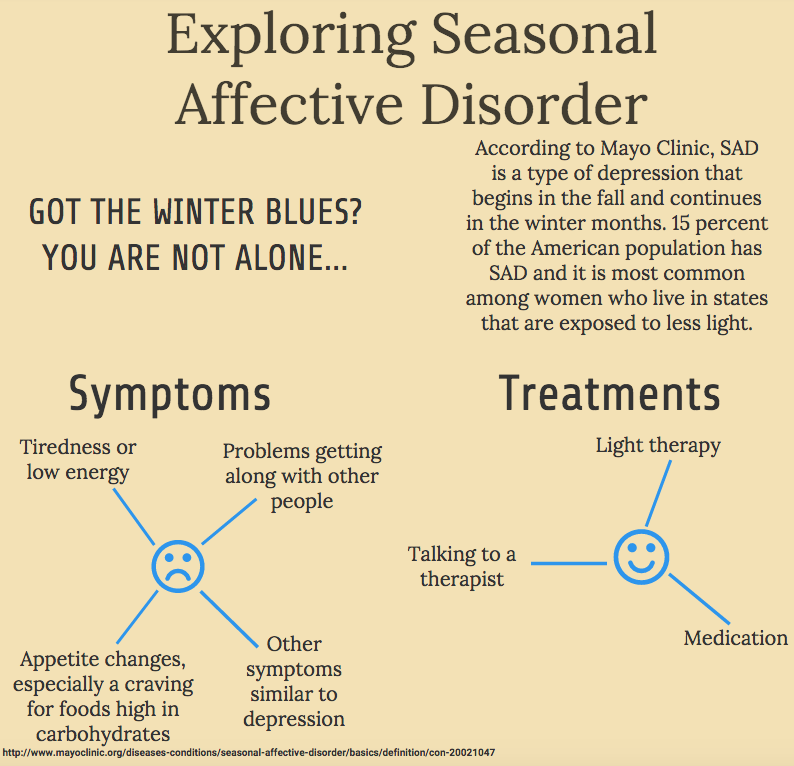Seasonal Affective Disorder impacts student’s mental health
January 7, 2017

Winter blues may be a simple answer to feeling low when heading into the colder seasons, but there might be a different reason for it.
According to Mayo Clinic, Seasonal Affective Disorder (SAD) is a type of depression that’s related to changes in seasons — SAD begins and ends at about the same time every year. Most people start feel the symptoms in the fall and continue into the winter months.
Seasonal Affective Disorder is not a common type of mental illness. American Family Physicians states, that only 15 percent of the American population has SAD and it is most common among women who live in states that are exposed to less light.
Sophomore Arieanna Junghans said, “I did not know about Seasonal Affective Disorder until, now but I know people who struggle with mental illnesses similar to SAD everyday.”
Seasonal Affective Disorder can be hard to identify. According to Mayo Clinic some symptoms include irritability, tiredness, appetite changes, problems getting along with others and oversleeping.
Gerard Coury AP psychology and world history teacher said, “I can identify when a student is dealing with mental illnesses like depression because they are very lethargic, reluctant to engage, and they isolate themselves.”
SAD occurs when the biological clock (circadian rhythm) gets thrown off due to the change in sunlight. Another reason Seasonal Affective Disorder occurs is when the serotonin, a brain chemical that affects mood, drops in production are caused by reduced sunlight.
Chemical Health Specialist Julia Geigle said, “Seasonal Affective Disorder is a very serious and legitimate health condition. Seasonal Affective disorder is a cluster of symptoms that effects a persons daily functioning and satisfaction of life. SAD is a mental disorder that comes around winter months and leaves in the spring.”
There are many different types of ways to treat Seasonal Affective Disorder. Light therapy is the most common way to help treat SAD. People sit next to a special light that mimics natural outdoor light. The light causes your brain to release more serotonin making you happy. Another way to treat Seasonal Affective Disorder is by medications and therapy.
Junghans said, “It is fascinating to think that simple things like sitting in front of a bright light could impact your mood drastically for the better.”
Coury said, “If you identify someone who is dealing with mental illnesses try to find a way to connect with them, try to help them find a way to happiness, try to get them to interact with other people and do not let them be alone in life.”



Maddy • Feb 10, 2017 at 10:49 am
Learning about S.A.D. was really interesting to read, and very informative to anyone who doesn’t know that it exists.
Andria Barrett • Feb 9, 2017 at 5:00 pm
This article has really good statistics and detailed quotes. The author did a lot of research and it is a very well written article.